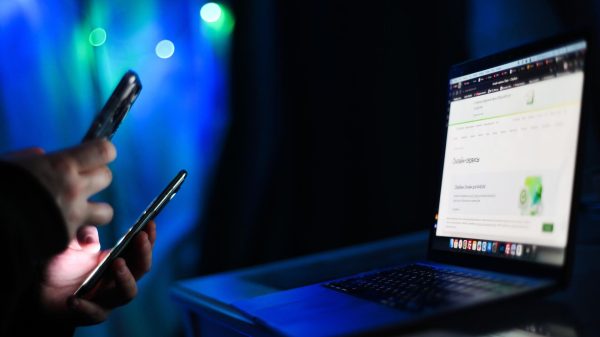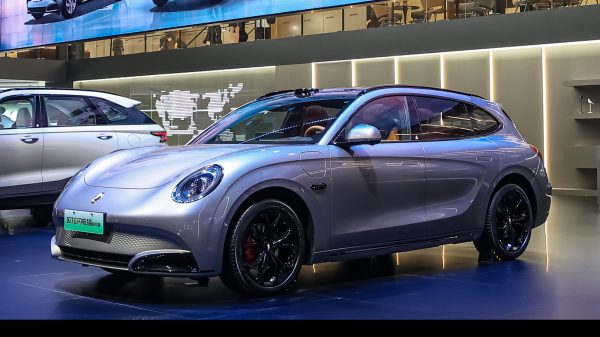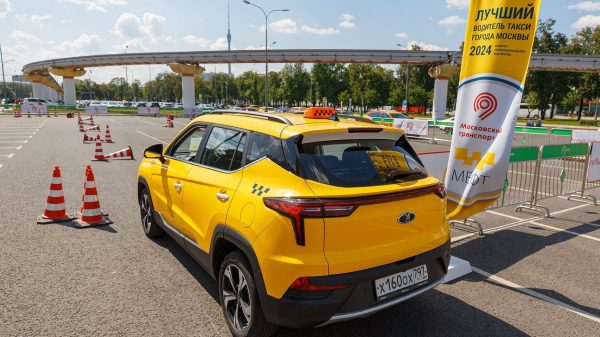
When Tim Cook, the Apple chief executive, excitedly announced the new iPhone 12 in October, many people viewing the stream showing off the new gadget would have been forgiven for thinking it was a smartphone that had already been released.
Despite Cook – standing in an empty auditorium on the company’s campus – enthusing that the new smartphone was a game changer thanks to its 5G connectivity, the actual device appears virtually identical to phones released over the past two years.
“iPhone 12 and iPhone 12 Mini are absolutely amazing,” Cook said after the reveal of the devices.
But look beyond the slick announcement videos for smartphones and you’ll see an industry scrambling to figure out how to breathe new life into the market. Have we come to the end of the road for innovation in smartphones?

Apple chief executive Tim Cook announcing the iPhone 12 in October
Credit: PA
The coronavirus impact has led to cratering demand for smartphones. Things have become so bad Samsung, the biggest smartphone maker in the world, considered ditching its Galaxy Note line next year.
Analyst Gartner’s sales reports for the industry have made bleak reading in 2020. In the first three months, demand for smartphones dropped 20pc.
The trend continued in the second quarter, with sales again dropping 20pc compared to the same period in 2019. It was only in the third quarter when the drop slowed, leaving sales down 5.7pc for the quarter.
Dropping smartphone sales can’t be written off as being caused entirely by the pandemic. Instead, the slowdown began years ago as customers began to hang on to phones for longer.
“The life cycles have been extending now for two or three years already,” says Roberta Cozza, a senior director analyst at Gartner. “The market was already struggling because we’ve been seeing extending life cycles.”
There are widespread worries in the industry that simply upgrading the camera, screen and battery of devices every year isn’t enough to convince customers to upgrade. “It’s not enough,” says Ben Wood, chief of research at CCS Insight. “In the UK, [the fact] people typically keep their phones for at least three years is testament to the fact people are looking at phones and saying ‘I don’t need to spend any more money on this now.’”
Networks and phone makers also face an uphill struggle in convincing customers to spend £800 for a device that can connect to 5G, a technology that is still being built across the UK.
Earlier this year, the UK 5G Innovation Network estimated 5G coverage extends to 10.8pc of London and is as low as 2.3pc coverage in Liverpool. Analyst Enders estimates that the roll-out of 5G has been half as fast as the launch of 4G networks.
What is 5G? | At a glance
“It is becoming increasingly harder for smartphone manufacturers to differentiate devices,” says Paolo Pescatore, an analyst at PP Foresight.
While the market is bleak, there are exciting opportunities on the horizon. For years, makers have dreamed of a radical reshaping of the smartphone, scrapping the generic black rectangles for something more exciting.
We have now reached a point where it’s gradually becoming cost-effective for Asian suppliers to produce devices that can fold in half or roll up.
These devices are eye-wateringly expensive at around £1,400, but could be the shot in the arm which the smartphone industry needs.

The Samsung Galaxy Z Flip folding smartphone
Credit: REX
“We are at the cusp of a new phase,” Wood says. “If [makers] were to use new tech like flexible displays, they could be the next Apple if they got it right.”
Companies such as LG and Oppo have poured millions of pounds into flexible screens in the hope that their expensive early devices kick off a rush for millions of people to upgrade. Even Samsung is considering diverting resources into another new folding phone, Reuters has reported.
There are even more outlandish forms being considered. Samsung has looked into transparent phones and Oppo patented a smartphone with a miniature extra screen that would slide out the top of the device. Earlier this year, LG released a T-shaped smartphone.
Analysts welcome these new devices, but questions remain on whether people actually want anything more than a glass rectangle.
There are also worries over durability. Samsung’s first folding phone, which cost $2,000 (£1,480), was pulled from sale after early units broke. And reviewers testing the $1,500 Motorola Razr this year found that the screen began to break after one week of use.

Motorola's Razr folding smartphone
Credit: The Telegraph
Despite these worries, it seems likely that 2021 will be a year of experimental smartphone forms, potentially leading to the biggest disruption in the industry since Steve Jobs debuted the iPhone in 2007.
“We do expect that 2021 should definitely bring growth in the market,” Cozza says, although she’s doubtful that folding phones will account for large parts of that recovery. Their impact is likely to come later as costs reduce even further. “Maybe we need to look at 2022 and 2023,” she adds.
It may take another announcement by Apple to finally force folding phones into the mainstream. Its approach to emerging technology has typically been to wait until rivals jump the gun and then add the technology to its devices.
There’s undoubtedly an exciting year ahead but analysts still aren’t sold on the idea that the answer to stagnation is folding our phones in half.
“Sometimes,” Wood says, “I look at it and go, ‘Well, maybe Steve Jobs just nailed it in 2007 and that was it and there’s no real reason to change it.’”
Has smartphone innovation reached the end of the road? Share your thoughts in the comments section below.



























































Свежие комментарии